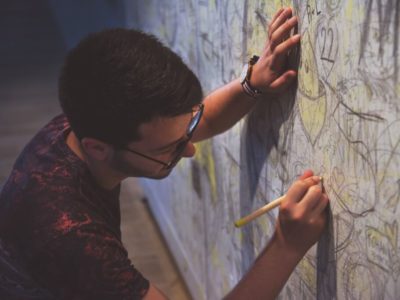Imagine a life without music, creative art, sculptures, theatre, drawing and writing. The fine arts provide students with what they need to grow their mind and explore their imagination.
Many may argue that a fine arts education isn’t needed nor what’s most important within school curriculums. Throughout my years in college, I have come to strongly disagree. Without an education in the fine arts, we as humans, would seldom develop or enhance our creativity to its fullest potential.
Drew Gilpin Faust, the first female president of Harvard University, AKA one of the most badass ladies out there, once said, “A fine arts education is designed to equip students for the flexibility and imagination needed to recognize opportunities and move in new—and sometimes unexpected—directions that will benefit you no matter your interests or aspirations.”
Reading this resonated with me. I agree with Faust whole-heartedly and feel for the students choosing to pursue a fine arts education but afraid of the stigma it carries.
I’m earning a Bachelor’s in English. I already have an Associate’s in Liberal Arts & Humanities. Because I am pursing this education, I know how tough it feels for people doubt whether or not what you study is important. Criticism is apparent everywhere if you choose the humanities path over STEM. You’re working more creatively rather than logistically, yet you do just as much.
The truth of the matter is that not enough people see the importance of the fine arts and what it can teach an individual. Putting an emphasis on how it benefits people is extremely vital. “Learning calculus and physics may make the world continue to turn, but all of the passionate things in life are found in the arts,” University of California, Berkeley English major Rhiannon Bogart said.
Through the fine arts we also learn important key life tools like confidence, motivation, teamwork, concentration and imagination. “The fine arts are a place where I find the space in my own creative environment to have those stimulating and fulfilling conversations about the world right in front of us…while still feeling like I’m learning something brand new,” Bogart said.
I argue with these points day in and day out. I could easily tell you the last time I argued with someone studying computer science about how writing essays is just as important because it happens so often.
The removal of the fine arts will lead to the downfall of students’ imagination and creativity. Think about what it would mean to eliminate this aspect of education. Low-income students often have nowhere but school to seek fine arts education. Students from wealthier families will get their fine arts education whether or not the public schools provide the arts, but as I mentioned, others may not be so lucky.
No one should be deprived from being immersed in the arts. I’m sure many can relate to a time a particular text or painting stuck with them.
A fine arts education not only teaches us creativity but also allows us to experience empathy and emotion for others. Linyan Tian, a philosophy major at Berkeley, said, “Fine arts touch on parts of the human experience that other fields cannot reach by themselves. They… explore topics of identity in interactive ways that help us come alive, question ourselves, laugh at ourselves, cry in ways we are unable to and see parts of ourselves in the real world repackaged in beautiful forms.”
So what we can do once we realized the importance of fine arts education? We can keep implementing and allocating funds into art programs. Teachers can also connect the fine arts studies to other subjects and allow students to voice their minds and show creativity through their voice and art.
Engaging our mind in the fine arts gives us an understanding of culture, emotion, passion and history. People who are devoted to this curriculum, recognize the inner meaning of life in all its beauty and diversity.



















